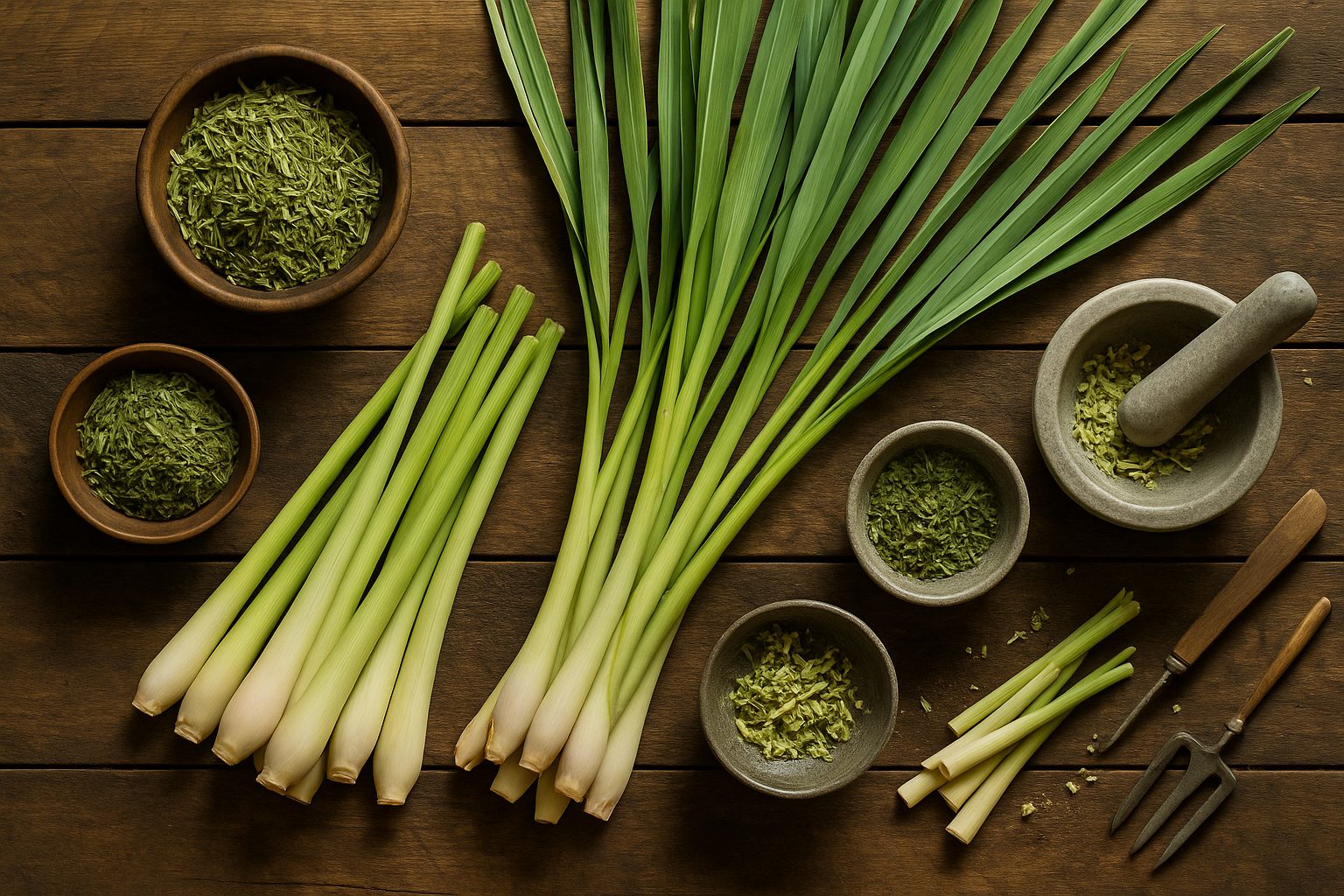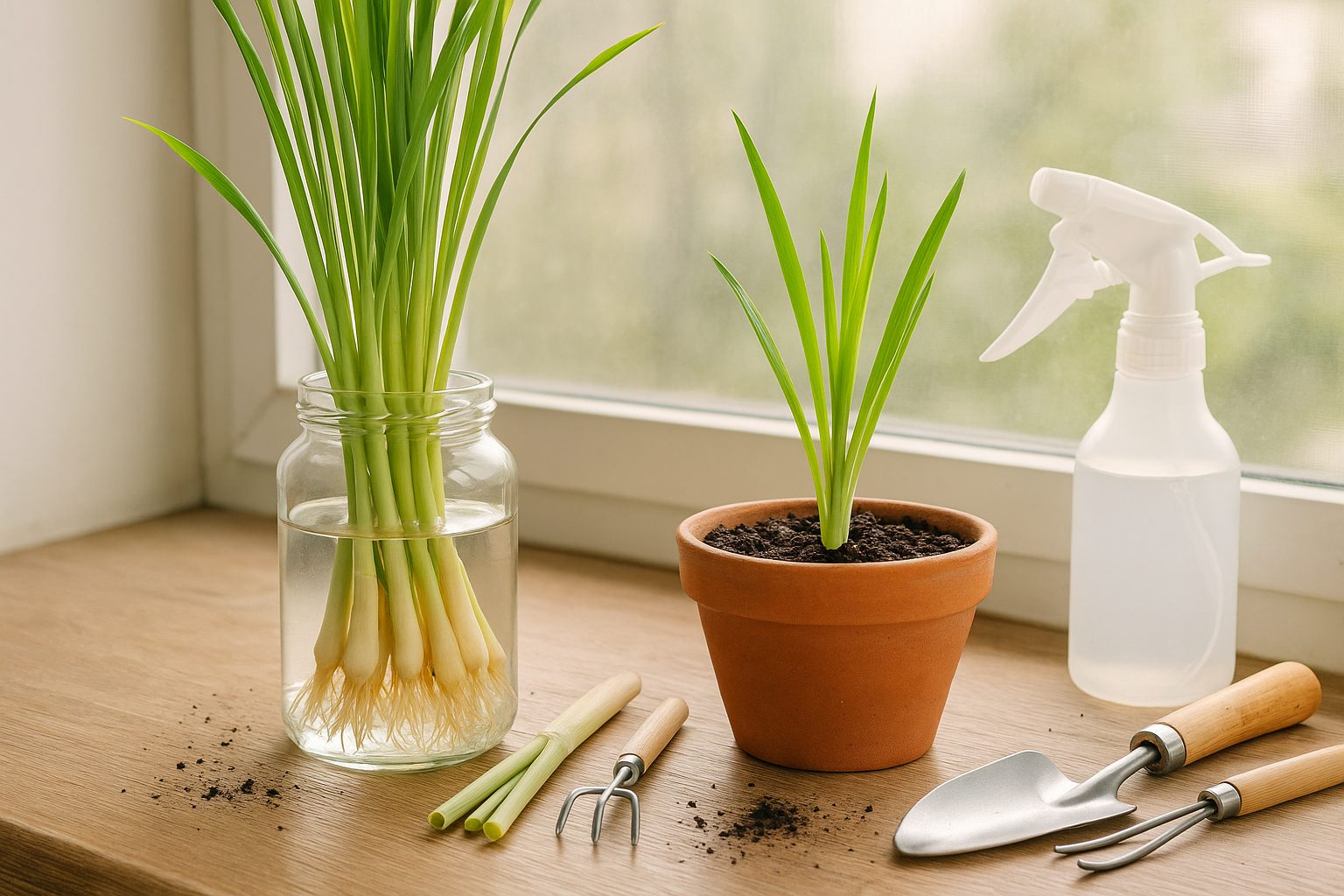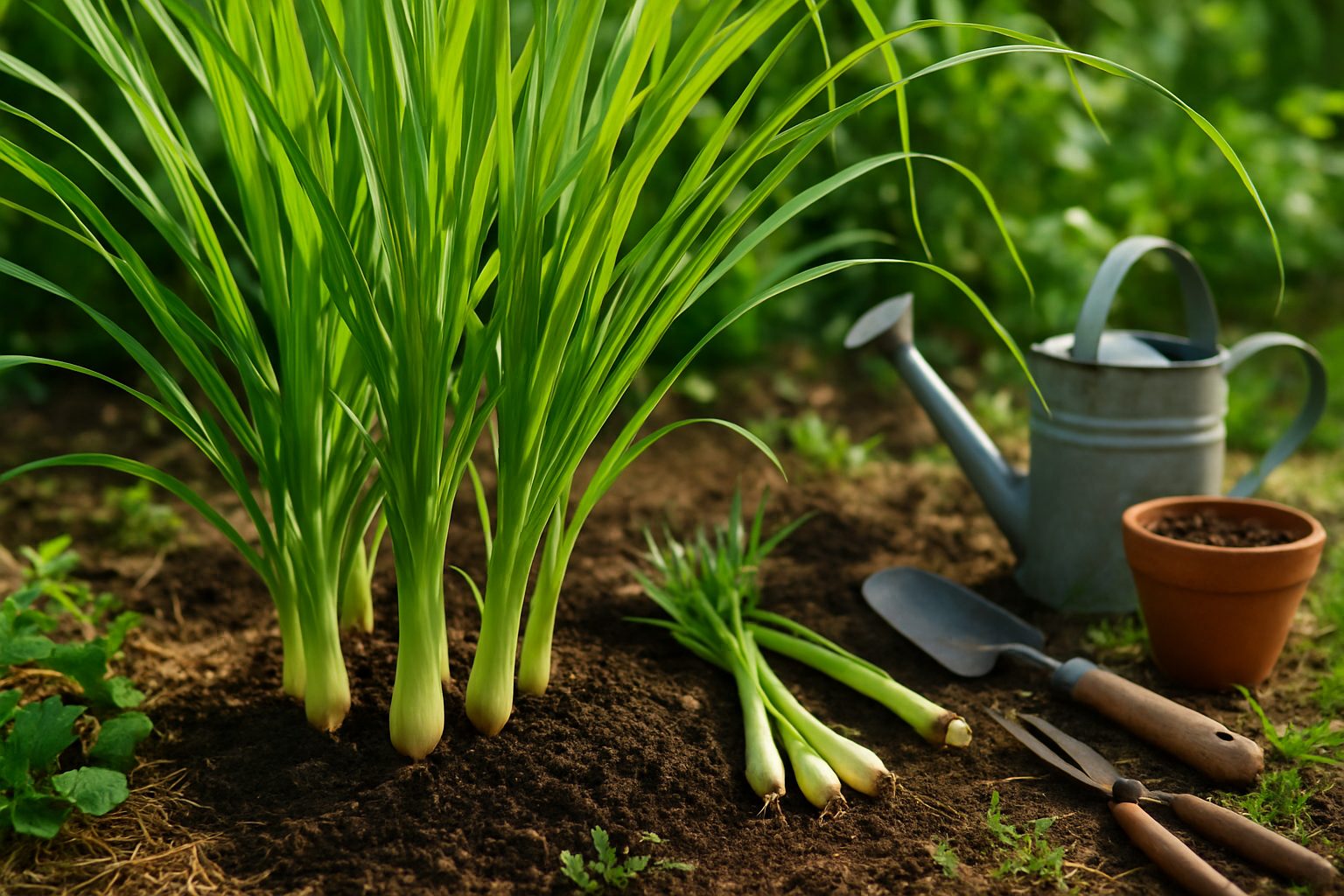Introduction
Lemongrass is a fragrant herb cherished in kitchens worldwide, especially for its bright citrus flavor that elevates dishes from curries to teas. The exciting part? You can easily grow lemongrass from stalks, even if you’re new to gardening. Starting with just a few fresh stalks from the grocery store, you’ll enjoy a continuous supply of this healthy, versatile plant right at home—saving money, boosting freshness, and reaping potential health benefits like improved digestion.
Plus, lemongrass is hardy and forgiving, making it perfect for beginners who want a low-maintenance plant that delivers results. In this guide, you’ll learn exactly how to select lemongrass stalks, root and plant them, care for your new growth, and harvest for maximum flavor. Whether you have a garden bed, patio pots, or just a sunny window, getting started is easier than you might think!
What is Lemongrass and Why Grow It?

Lemongrass is a tropical plant known for its tall, slender stalks and fresh, citrus scent. Botanically called Cymbopogon citratus, it’s a staple in Southeast Asian kitchens—think Thai curries, Vietnamese soups, and fragrant teas. Its bright, lemony flavor adds a unique twist to marinades, dressings, and stir-fries, making it a versatile culinary ingredient.
Beyond cooking, lemongrass is valued in traditional medicine for its potential health benefits, such as easing digestive issues, reducing inflammation, and promoting relaxation when brewed as tea.
Growing lemongrass at home is surprisingly easy. It thrives in pots or garden beds with plenty of sun and regular watering. Home gardeners appreciate its charming, grassy appearance and the way its aromatic oils naturally repel mosquitoes, making it a handy companion for patios or outdoor spaces.
Plus, snipping fresh stalks for cooking or tea is far more rewarding and flavorful than using store-bought versions. By planting lemongrass, you’ll enjoy not just a useful ingredient and herbal remedy, but also a pleasant aroma and a natural way to keep pesky insects at bay.
Choosing and Preparing Lemongrass Stalks
When picking lemongrass stalks for planting, start by visiting a reliable garden center or a grocery store with a good produce section. Look for fresh, green stalks that are firm to the touch—avoid any that feel limp or have lots of brown, dried-out leaves at the top.
The best stalks are about the width of a pencil and have a small, bulbous base. Roots are a big bonus, so choose stalks with visible roots whenever possible, as they’ll establish faster in soil. If you can only find rootless stalks, opt for the freshest-looking ones. Then remove any tough outer leaves and trim the brown tops before planting.
It’s helpful to soak the cleaned stalks in a jar of water for a few days to encourage root growth before moving them into soil or pots.
If you want a head start, buying established lemongrass plants from a nursery is convenient—they’re already rooted and thriving, so you can enjoy quicker harvests. On the other hand, rooting your own stalks from the grocery store is budget-friendly and surprisingly simple, though it requires a little patience as you wait for roots to develop.
Both methods work—just choose what fits your schedule and budget best.
How to Propagate Lemongrass: Water vs. Soil Methods

Propagating lemongrass is surprisingly simple, whether you start with water rooting or plant cuttings directly in soil.
Water Method
Choose a clear glass or jar tall enough to support the stalks upright. Fill it with just enough water to cover the roots or root nodes at the base, and place your healthy, freshly cut lemongrass stalks (store-bought is fine) in the container. Set the jar somewhere bright but out of direct sun to prevent overheating, and change the water every 2–3 days to ward off bacteria and rot.
Within a week to ten days, you’ll notice small white roots emerging from the base. True root development for transplanting typically takes two to three weeks, when roots are a couple of inches long.
Soil Method
Use a pot with good drainage and a light, well-aerated mix—try a blend of standard potting soil, some perlite, and a bit of compost for nutrients. Insert the stalk base about an inch deep, water so the soil is moist but not soggy, and keep the pot in a warm, bright spot.
Mist the soil occasionally to maintain humidity, but don’t overwater, as lemongrass can be rot-prone if the base stays wet. Rooting in soil can take two to four weeks, and you’ll know roots have formed once you see new leaf growth.
Aftercare and Tips
When your water- or soil-propagated plants are established, harden them off by gradually moving them outdoors for a few hours each day before transplanting into the garden or larger pots—aim for when roots are strong and at least a few inches long.
If roots look brown and mushy, trim off rot, change the water, and make sure you’re not covering too much of the stalk. Slow growth often means not enough warmth or light—aim for at least six hours of bright light daily.
With a little patience and the right care, you’ll have new lemongrass ready for your kitchen or garden in a month or less.
Planting and Early Growth Care
For the healthiest start, time your planting based on your climate—spring is ideal for most regions when the soil begins to warm but before the heat of summer sets in. If you’re growing indoors, choose a spot with bright, indirect sunlight, and keep room temperatures between 65°F and 75°F.
Outdoors, select locations that get at least six hours of sun a day, avoiding areas prone to strong wind or waterlogging. Well-draining soil is crucial; amend heavy soils with compost or sand to boost drainage and fertility. Aim for a soil pH between 6.0 and 7.0 for most plants, and test beforehand using an inexpensive home kit for best results.
When planting seeds or seedlings, follow individual species guidelines, but a general rule is to plant seeds at a depth about twice their diameter and space plants according to mature size—crowded plants are more prone to disease and poor growth.
Water thoroughly after planting, then maintain consistent moisture without saturating the soil—stick your finger an inch into the soil; if it’s dry, it’s time to water.
Early fertilization isn’t always necessary, especially if you’ve enriched the soil with compost, but a diluted balanced fertilizer after seedlings develop a few true leaves can give them a gentle boost.
Mulching helps retain moisture, suppress weeds, and regulate temperature, but keep mulch a few inches from stems to prevent rot.
With careful attention to these early needs, your plants will establish robust roots and be set for healthy growth.
Ongoing Lemongrass Care: Watering, Feeding, and Maintenance
Properly caring for lemongrass is all about consistency and paying attention to your plant’s needs. Water lemongrass deeply about once or twice a week, ensuring the top inch of soil dries out between waterings. Lemongrass loves moisture but hates soggy roots, so avoid watering daily or letting water pool around the base.
During hot or dry spells, keep an eye on the soil and increase watering if the leaves begin to curl or droop. For feeding, use a balanced liquid fertilizer every four to six weeks in spring and summer, or top-dress the root area with compost or well-rotted manure. Organic amendments like fish emulsion or homemade banana peel tea provide steady nutrients and support strong growth.
Mulching with straw or shredded leaves helps lock in moisture, suppress weeds, and keep the soil temperature stable, which lemongrass appreciates. Check the base of the plants weekly and gently pull or hoe away any weeds that pop up, as they compete for water and nutrients.
Watch for common garden pests such as aphids and spider mites; a quick hose-off or a gentle spray of soapy water usually keeps infestations under control. Inspect stems for rust or discoloration, trimming away any affected parts promptly to prevent disease spread.
With ongoing attention to watering, feeding, and general garden housekeeping, your lemongrass will reward you with healthy, flavorful stalks all season long.
Pruning, Harvesting, and Using Lemongrass
Pruning lemongrass is essential to keep the plant healthy and maximize both leaf and stalk yields. Start pruning once your lemongrass has established several stalks—usually about four months after planting. Use clean, sharp garden shears to trim back any dead or yellowing leaves at the base, which helps direct energy to new, vigorous growth.
Every few weeks during the growing season, you can trim the leaf tips to encourage bushier, more productive plants.
For harvesting, look for stalks that are about half an inch thick and at least a foot tall. Grip the stalk firmly at the base and cut it just above the soil, being careful not to damage nearby shoots, which will encourage regrowth. Young, tender stalks can be harvested for a milder flavor, while older stalks are more robust and aromatic.
To keep harvested lemongrass fresh, wrap unwashed stalks in a damp paper towel and store them in the refrigerator crisper for up to three weeks. If you have an extra bounty, slice the stalks and freeze them in airtight bags for up to six months, or dry the leaves and stalks in a warm, well-ventilated area for teas and infusions.
Lemongrass is a star in many Southeast Asian dishes like soups, curries, and marinades, lending a citrusy brightness to food. Medicinally, it’s often brewed as a tea to help relieve digestive discomfort or anxiety. By pruning, harvesting, and storing lemongrass thoughtfully, you’ll enjoy its fresh flavors and health benefits year-round.
Conclusion & Additional Tips
Growing lemongrass is surprisingly simple and incredibly rewarding, even for beginners. With just a sunny spot and regular watering, you’ll have fresh, fragrant stalks ready to harvest.
For even more success, consider joining a local community garden where you can swap tips and cuttings with fellow gardeners. Once your lemongrass is thriving, try adding it to teas, curries, and marinades for a fresh, citrusy twist. Don’t be afraid to experiment!
Finally, share your growing journey with friends or online groups—you might inspire others to start their own lemongrass patch and discover new favorite recipes together.
